
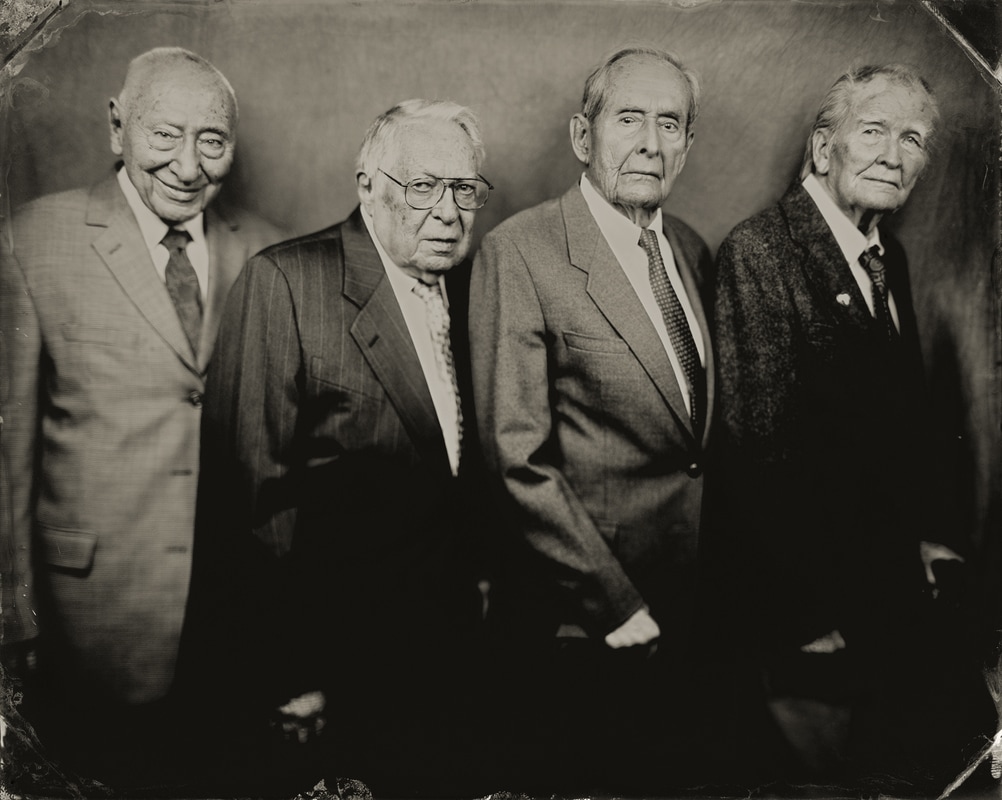
From left, Nick Leo, Seymour Nussenbaum, Arthur Shilstone, and John Jarvie.
Courtesy of www.ghostarmylegacyproject.org .
Following the defeat of the Germans and their allies in World War 2, Ghost Army veterans were finally able to return to their families and pursue their normal careers. Many became artists and Illustrators, some for big companies. The Ghost Army remained classified until 1996 because there was a chance that the U.S. would want to use this strategy in another war.
“What’s interesting though to me, is still how many people don’t know about it”
- Rick Beyer
Following World War II, no one was allowed to speak about the Ghost Army in case the U.S. wanted to use this strategy again in a later war. The Ghost Army became publicly known in 1985 when a Smithsonian article was written (Please read article in our website). It was officially declassified in 1996. For the first time, the Ghost Army was recognized in France for everything they did at the battle of Brest in World War II. The National World War II museum in New Orleans gave the Ghost Army their own exhibit on March 5, 2020. This was the first kind of major recognition the Ghost Army had gotten.
Listen to Ghost Army Veteran George Dramis tell for himself why they had to be kept a secret. Our personal interview !
“Our mission is to remember these soldiers and remember what they did, to gather an archive, to preserve their story and their legacy.”
- Rick Beyer
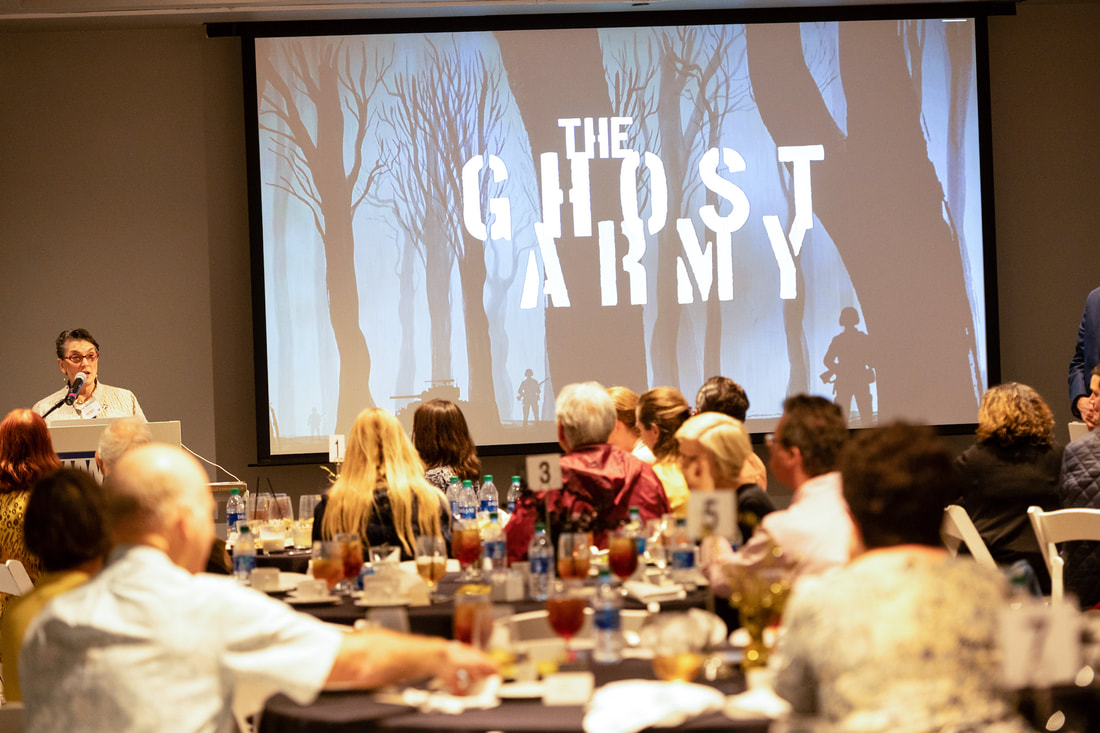
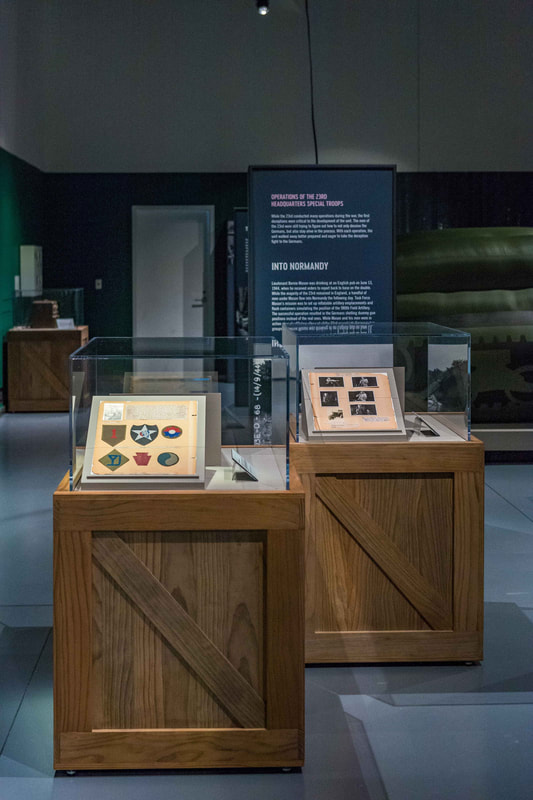
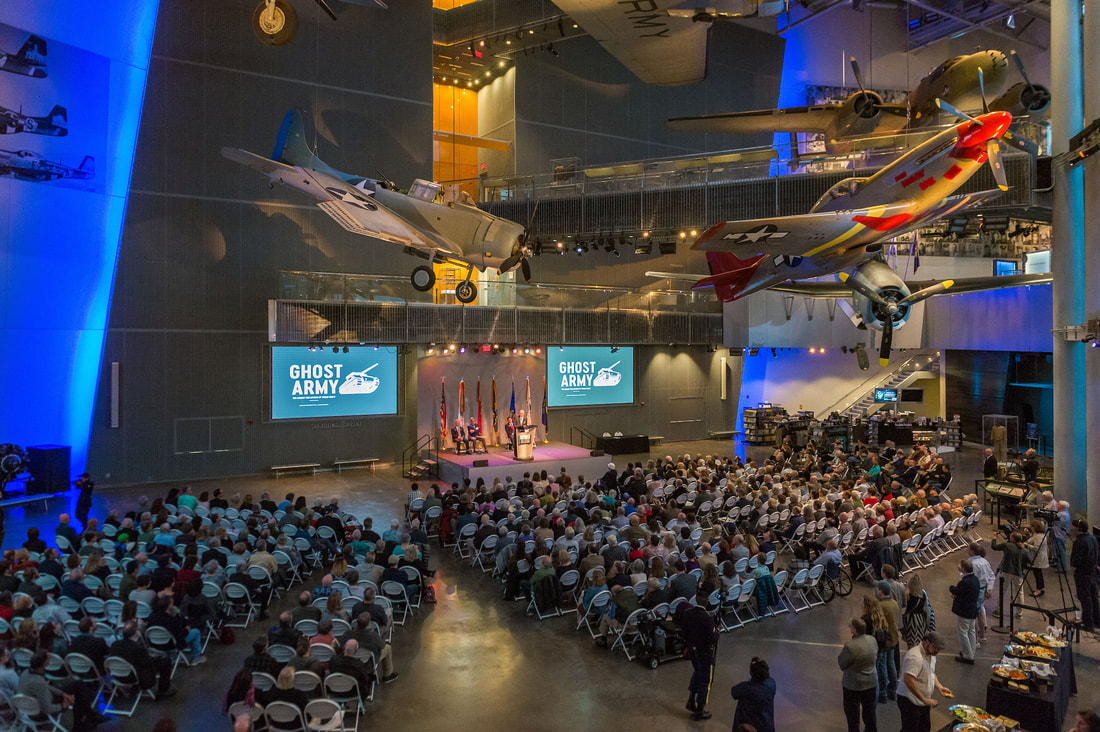
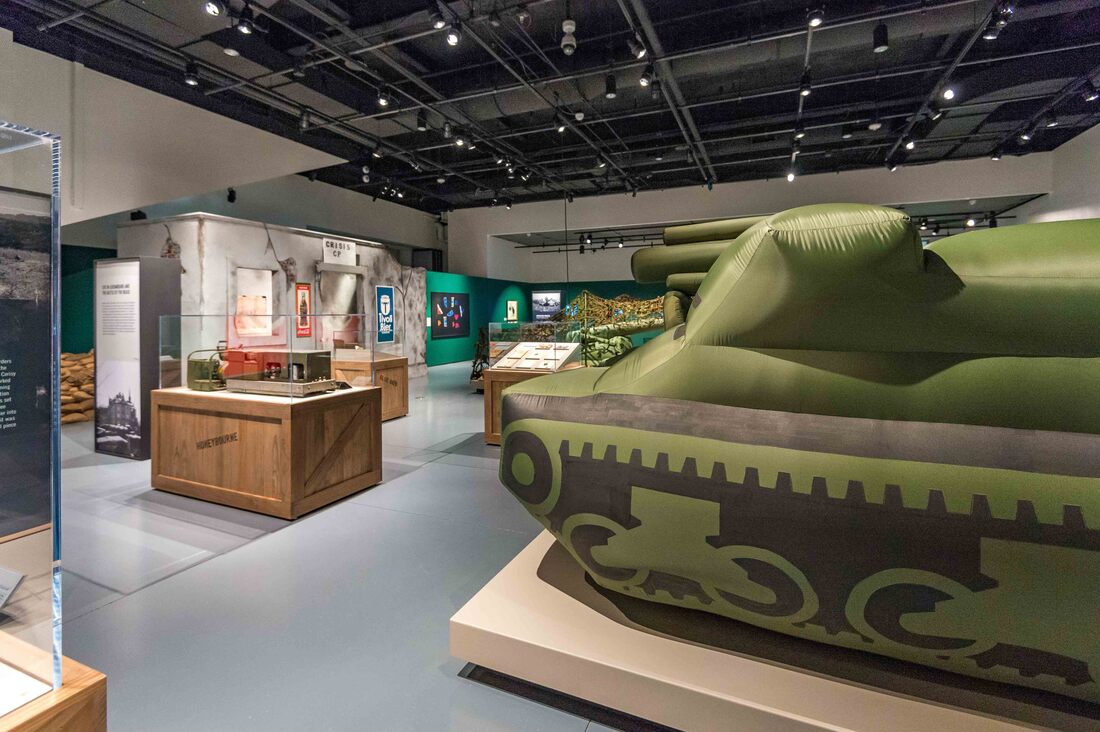
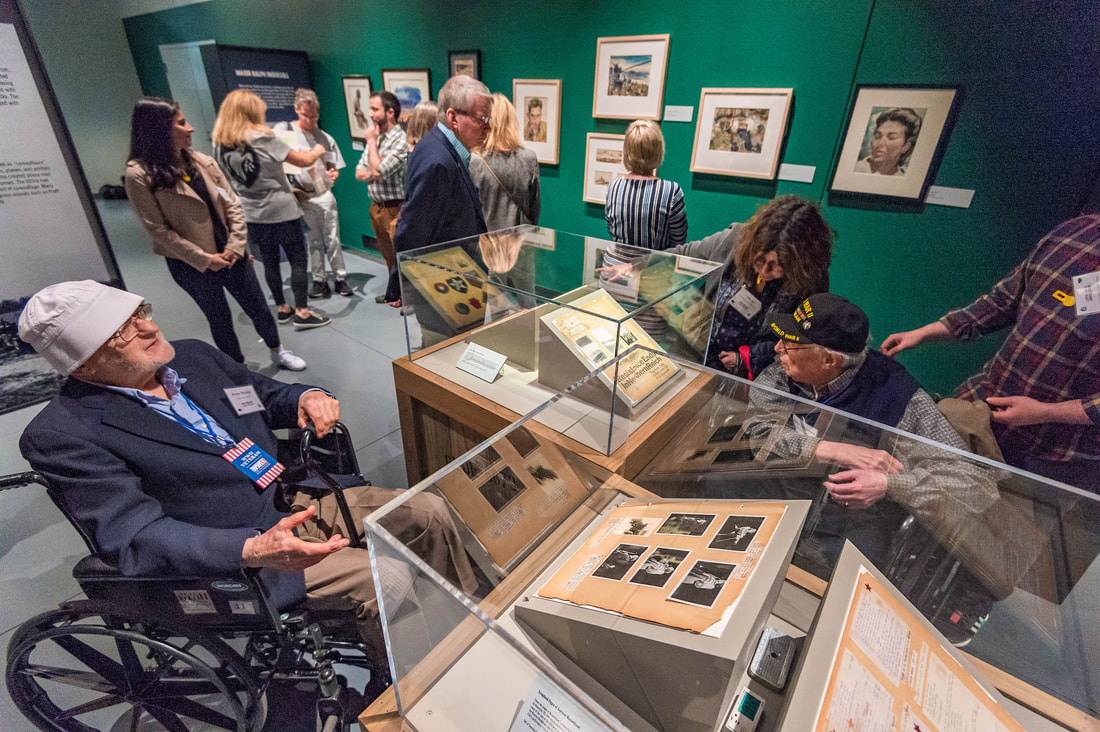
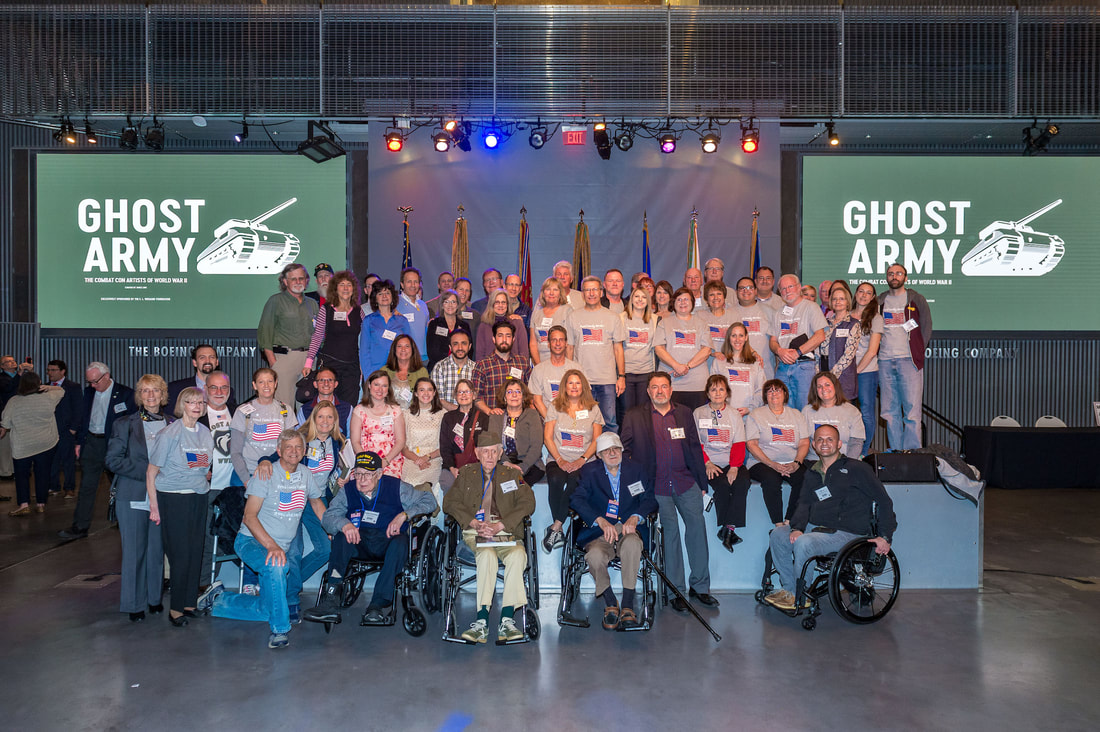
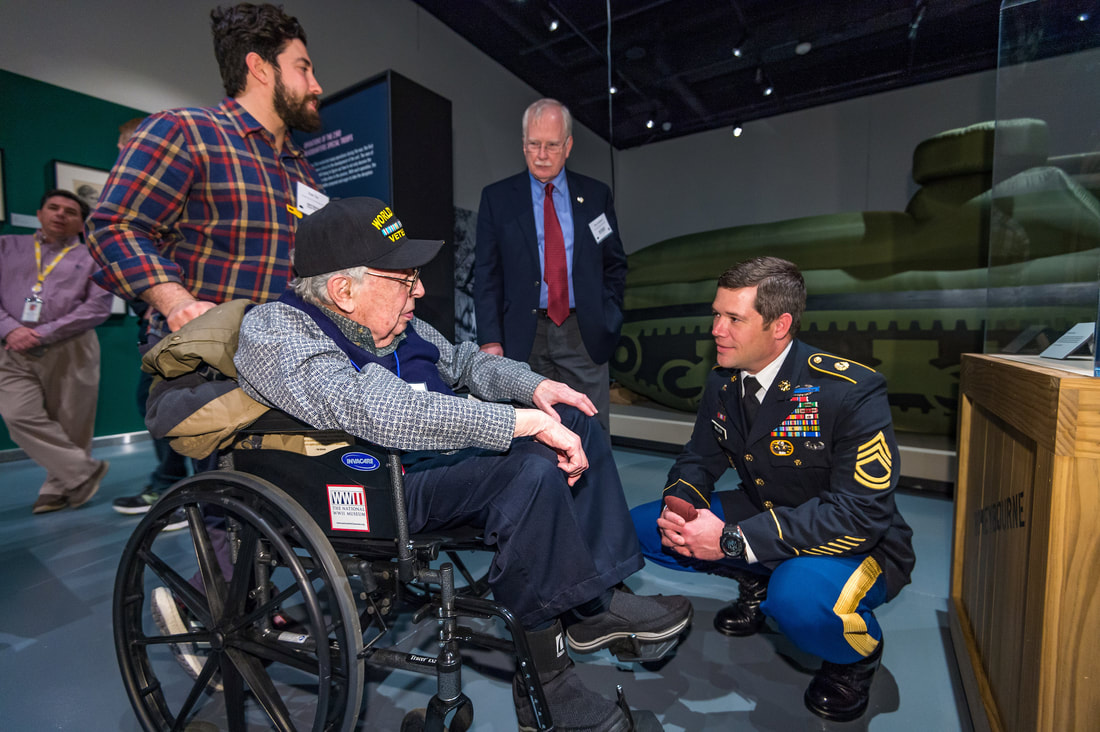
Text on page courtesy of www.ghostarmylegacyproject.org. The opening night photos above were taken by Frank Aynami.

"The deceptions weren’t all visual: sound was an important aspect. The Ghost Army’s sonic unit—the 3132 Signal Service Company—prerecorded soundtracks of armored and infantry units in action, which it played through speakers that could project sound as far as 15 miles away. Another unit performed radio deceptions."

"Some of the Ghost Army’s artists went on to worldwide fame—among them photographer Art Kane, abstractionist Ellsworth Kelly, and fashion designer Bill Blass (who re-tailored his uniform so it would fit better), second from right, above. At far left above is Bob Tomkins, author of the pocket-sized diary (below picture)."

"When Ghost Army members needed unit patches, they’d make their own by using stencils and painting the fabric."

"Up close, one of the Ghost Army’s inflatable tanks—a framework of inflatable tubes supporting a rubberized canvas overlay—would fool no one. But from about a quarter-mile away it looked every bit the M4 Sherman. It and other visual deceptions were the work of the 603rd Camouflage Engineering Battalion, consisting of individuals recruited for artistic talent and high IQ."

"Soldiers and sailors were forbidden from carrying diaries during the war; the Ghost Army’s Robert R. Tomkins, an artist and jeep driver, opted to keep one anyway, gambling that its small size—2” by 3” and 56 pages—would make it easier to conceal. An entry from September 16, 1944, when Bob was in Luxembourg near the German border, describes one deception setup: “Last night moved up about 1 1/2 miles and pulled into heavy woods about 3 o’cl. Tanks moving all around us. Woke early. Sewed on patches. Set up tanks. Built fires simulating armored infantry battalion. Truck goes out every hour into village on atmosphere.”

"In the pen-and-ink sketch above, by Ghost Army artist George Vander Sluis, two men ready a paint container while another spray paints fabric for an upcoming deception."
Click here to view our timeline
 Click here to see how Ghost Army tactics were used in the Vietnam War
Click here to see how Ghost Army tactics were used in the Vietnam War